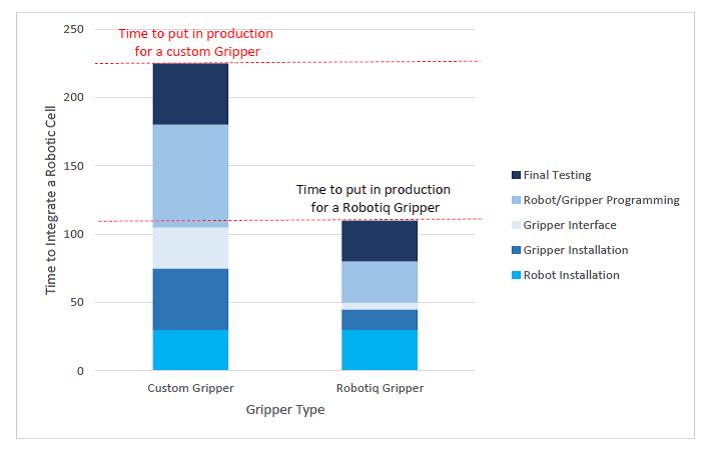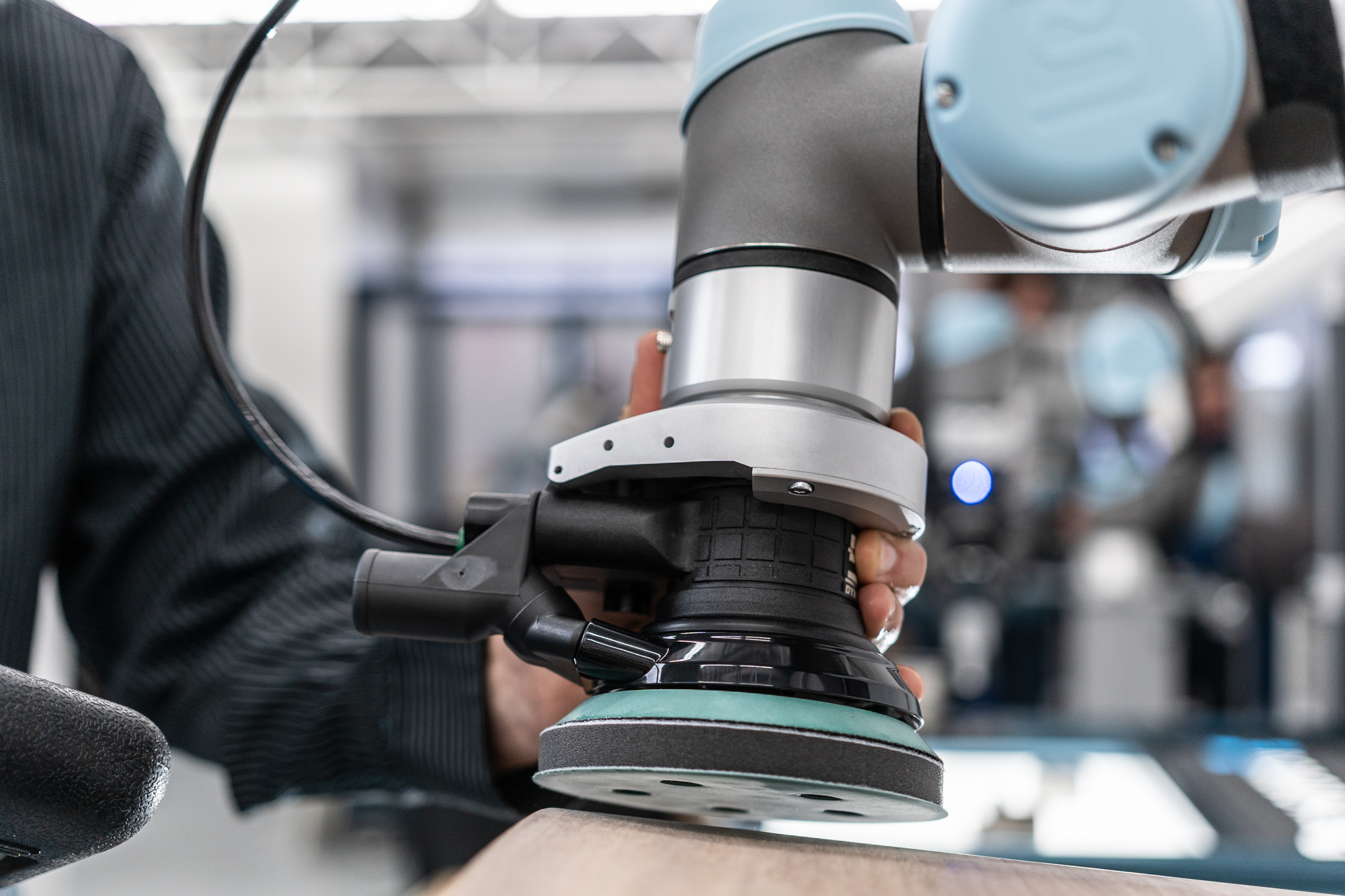Which Robot Gripper is Easier to Integrate? Part 3 - Integration Process

Posted on Nov 23, 2015 1:12 PM. 5 min read time
The integration of the robotic cell is a critical part of the introduction of a robot in a manufacturing process. If the integration can be made within a couple hours, it can be a game changer compared to an integration that is done over a couple of days. In the first situation your operations are up and running again almost instantly. In the second situation, you need to restructure your workforce around the integration and delay or create a surplus production to carry you through the integration period. So the bottom line is you really want to keep the integration time as low as possible and as easy as possible.
An important aspect to consider in the selection of a gripper (and a robot too) is the changeover time (AKA setup time). In fact, between productions or when it’s time to change product production, you want to reduce to the absolute minimum possible; the time between the last part produced and the moment you get back into production. If you need to monopolize an entire team to do changeovers, it may be a real headache compared to a setup that is a lot simpler and more intuitive. To get a better idea, we have studied the integration time between a custom gripper and a Robotiq Gripper on a Universal Robots. The difference is quite amazing. Notice that the times presented here have been taken from data collected from our partners and customers.
Custom Gripper
The Gripper integration process is split into 2 major sections. The gripper to robot interface and the gripper programming.
In the case of a custom gripper, there is no all-inclusive bundle for a specific application. So you basically need to take all the parts that the engineering department gave to you and hope that everything will fit on the robot tool flange and in the robot controller. There aren’t any pre-programmed routines either. So you need to synchronize the pneumatic valve logic with I/O’s entries in the robot controller. You also need to adjust pressure to make sure the force is set the right way. You finally need to set the airflow to adjust the speed of the gripper.
 Adding to that, you will have to install a proximity sensor at the right spot to make sure the part has been grabbed by the gripper. You will then need to make sure the valve is at the right distance from the gripper to work properly and that the filters are cleaned every now and then to keep a constant pressure on the gripper air lines. Hopefully, the fingertips and coupling that the engineering department provided you or designed will work correctly and will secure the part in place.
Adding to that, you will have to install a proximity sensor at the right spot to make sure the part has been grabbed by the gripper. You will then need to make sure the valve is at the right distance from the gripper to work properly and that the filters are cleaned every now and then to keep a constant pressure on the gripper air lines. Hopefully, the fingertips and coupling that the engineering department provided you or designed will work correctly and will secure the part in place.
What has to be integrated here?
- Make sure all parts fit on the robot wrist.
- Integrate air and electrical powered devices.
- Integrate proximity sensor(s).
- Make sure the pressure and airflow are correctly set.

Integration time comparison between custom gripper and Robotiq Gripper
Robotiq Adaptive Gripper
 The integration of a Robotiq Gripper is quite straightforward. Once you have opened the box, you have a start guide to help you install the Gripper correctly on the robot. All screws, pins, cables and wires are provided in the kit to make the integration fast and easy. Since it is all electrical; there is no need for air fittings or flow regulation. It is all programmable. To make your life even easier we provide a video to help you figure how to install your Gripper on the Universal Robots’ tool flange. So the bottom line is that you will not have to go back to the engineering department to ask for supplementary parts.
The integration of a Robotiq Gripper is quite straightforward. Once you have opened the box, you have a start guide to help you install the Gripper correctly on the robot. All screws, pins, cables and wires are provided in the kit to make the integration fast and easy. Since it is all electrical; there is no need for air fittings or flow regulation. It is all programmable. To make your life even easier we provide a video to help you figure how to install your Gripper on the Universal Robots’ tool flange. So the bottom line is that you will not have to go back to the engineering department to ask for supplementary parts.
What has to be integrated here?
- All-inclusive bundle.
- All-inclusive robot to gripper interface.
- Simple electric control.
On the programming side of things, we provide drivers and built-in programs to allow you to program and troubleshoot the Gripper easily. The interface is embedded into the robot teach pendant and will allow you to configure; speed, force and position for the Gripper.
What have we learned until now?
With the last three articles in this series, we have learned that using a Robotiq Adaptive Gripper makes life a lot easier for all levels of the enterprise. From engineers, to buyers and finally for shop workers. The integration process goes in smoother and is less painful than using a custom gripper. And to be honest, this is not only our point, it’s the point of most people who have tried both solutions.
The selection process goes as smooth as butter, since there are very few variables and the solution allows you to grasp a wide range of parts. The robotic cell is also easier to design since the tool side of things requires very few modifications. And finally, it makes life easier for workers, because they have the whole solution inside one box, including screws, wires and programs.
Bottom line: everybody is saving time! Your production is stopped for a minimum amount of time, so you get back into production and back to work a lot faster. No more headaches when integrating a Robotiq Gripper.
Related Articles
WHICH ROBOT GRIPPER IS EASIER TO INTEGRATE? PART 1 - SELECTION PROCESS
WHICH ROBOT GRIPPER IS EASIER TO INTEGRATE? PART 2 - DESIGN PROCESS









Leave a comment